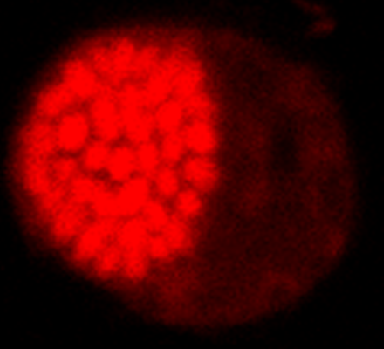

Sensory Transduction - Pfiesteria Dinoflagellates |
|

|
|
Dinoflagellates may be described as swimming sensors. These cells contain molecular sensors to detect light, chemicals, mechanical events, and other environmental stimuli. How are these environmental cues perceived, what are the molecular mechanisms used, and how do the signals control gene expression? We have begun a study on sensory transduction mechanisms in Pfiesteria piscicida and P. shumwayae with specific attention to G-proteins. A thorough investigation of these mechanisms will have important implications to our understanding of the physiology and toxigenesis of these fascinating organisms. |